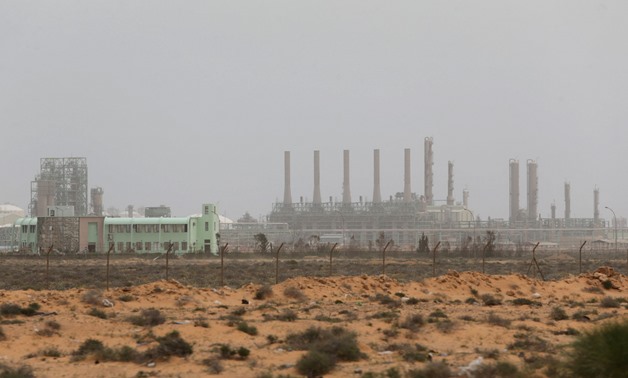
FILE PHOTO: A view shows Ras Lanuf Oil and Gas Company in Ras Lanuf, Libya, March 16, 2017. REUTERS/Esam Omran Al-Fetori/File Photo
SINGAPORE - 15 November 2018: Oil prices stabilized on Thursday, reversing earlier declines, but market sentiment remained cautious over concerns that a supply glut may emerge amid a glum economic outlook.
Front-month Brent crude oil futures were trading at $66.17 per barrel at 0737 GMT, up 5 cents from their last close.
U.S. West Texas Intermediate (WTI) crude futures were at $56.29 a barrel, up 4 cents from their last settlement.
Traders said the benchmarks reversed earlier losses on signs China and the United States may be taking steps to de-escalate their bitter trade dispute.
Despite this, oil prices have lost around a quarter of their value since early October as supply soars just as demand is expected to slow down along with an economic downturn.
“Asian refiners and consumers we speak with are mentioning initial concerns of slowing demand,” said Mike Corley, president of Mercatus Energy Advisors.
U.S. bank Morgan Stanley said in a note on Wednesday that China’s economic “conditions deteriorated materially” in the third quarter of 2018, while analysts at Capital Economics said China’s “near-term economic outlook still remains downbeat.”
China is the world’s biggest oil importer and the second-largest crude consumer.
Meanwhile, data released this week showed economic contraction in industrial powerhouses Japan and Germany in the third quarter.
At the same time, supply has been surging, especially due to a 22 percent rise in U.S. crude oil production this year to a record 11.6 million barrels per day (bpd).
“Producers...have more barrels than they can sell at the moment,” said Mercatus Energy Advisors’ Corley.
As a result, oil inventories are rising. The American Petroleum Institute said late on Wednesday that crude inventories rose by 8.8 million barrels in the week to Nov. 9 to 440.7 million, compared with analyst expectations for an increase of 3.2 million barrels.
“With inventories likely to build in 1Q19, prices could remain under pressure in the near term,” analysts at Bernstein Energy said in a note.
CUTS COMING?
Fearing a renewed glut like in 2014, when prices crashed under the weight of oversupply, the Organization of the Petroleum Exporting Countries (OPEC) is discussing supply cuts.
To do so successfully, OPEC - under the de-facto leadership of Saudi Arabia - will need Russia on its side, which is not an OPEC member.
A joint effort between OPEC and Russia to withhold supply from 2017 was a major contributor to crude price rises last year and in the first half of 2018.
“Russia and OPEC and Saudi Arabia - they are observing the market. If they see that there is dis-balance between supply and demand, (they) will of course take a joint action to reduce supply,” said Kirill Dmitriev, head of Russian Direct Investment Fund, the country’s sovereign wealth investment body.


Comments
Leave a Comment